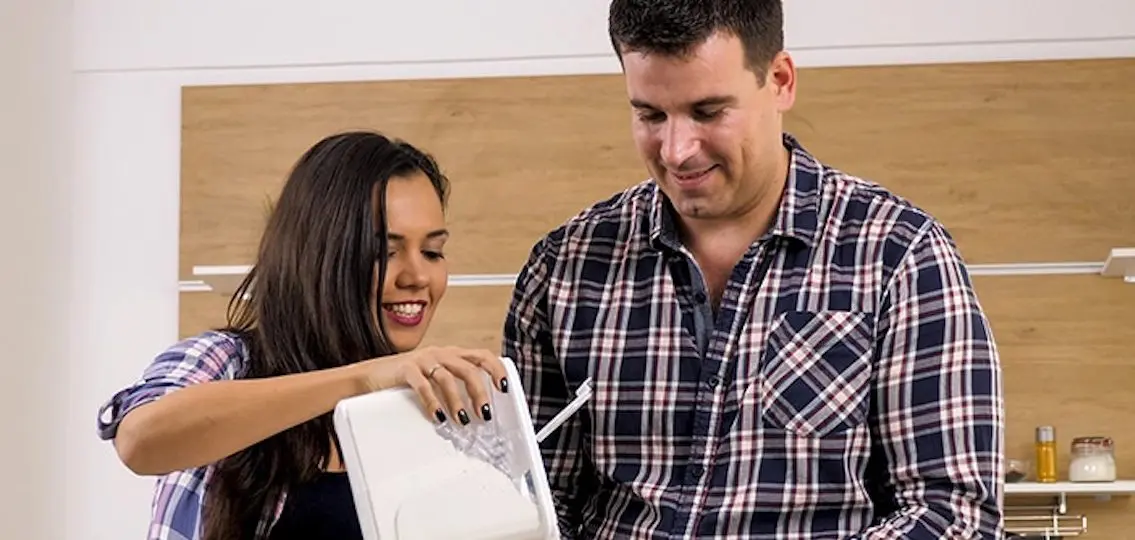Recently we interviewed Mark Goulston, MD, a psychiatrist, executive coach, author of Just Listen, and the creator and developer of Design Thinking Suicide Prevention, an empathy-informed approach to suicide prevention.
Goulston uses an approach he calls Surgical Empathy with his patients—think intentional, precise empathy with a purpose. The goal is to meet people who are in pain with compassion and to build a connection to them. Only then can they remove death as an option and address the things that they are struggling with.
But even if no one in the family is experiencing anything as serious as suicidal ideation, Surgical Empathy can help us connect with our teens. So much of what Goulston talks about in his interview resonates with me as a parent. He shares tips and exercises on how to meet people where they are. Once kids sense that adults truly understand their feelings, they’re more willing to share their thoughts. Parents of teens are desperate for ways to connect with them, and this discussion of Surgical Empathy provides real world applications we can use today.
The Importance of Connecting with Your Teenager
According to Goulston, understanding a person’s feelings or being empathic is key to having influence. Parents of teens struggle to have influence over adolescent independence seekers. Therefore, the more empathetic a parent is, the more influential they’ll be with their children.
To clarify, influence isn’t control. Rather, it’s having an impact on behavior. By using Surgical Empathy, parents can instigate productive conversations with teens which influences their behavior.
“Feeling Felt”
Teens need us to meet them where they’re at more than they need us to give them solutions. To do this, parents have to find ways connect with teens in an environment where they “feel felt.”
There are many ways one can feel felt. For instance, when describing a connection with another person, your teen may say something like, “He gets me.” What does that mean? Most likely he has taken time to listen to your teen, a luxury every parent craves (if only they’d talk to us!).
Many teens rarely share with us and go out of their way to hide their feelings, especially the difficult ones. Surgical Empathy is a way to help them “feel felt” so that they’ll share. To this end, Dr. Goulston offers a simple impulse control activity which initiates conversation as well as provides an opportunity for teens to discover ways they can manage reactive impulses to upsetting situations.
Family Impulse Control Activity
Immediately after viewing this interview, I prepared a quick dinner and decided to try the suggested Family Impulse Activity. I was more curious about the activity than worried about anyone at the dinner table. We’d been having a stress-free season. I figured this would be something new to try.
In this activity families talk about being upset, the impulses it ignites, and how to avoid acting upon those impulses. I approached it as a variation on the round robin “tell me one good and one not-so-good thing that happened today” conversation starter many families have. Instead of asking the usual open-ended question which could yield a general response like, “It rained during lunch,” I was specific.
I began by asking each family member to share something that upset them during the day. As happens with teens I received a non-answer, “Today was fine.” Fueled by Dr. Goulston’s advice that parents repeatedly go deep, I probed further.
“But did anything upset you, was a little annoying, or really bother you?”
After a bit of insistent inquiry, our son unburdened himself. Turns out that day he had a significant, negative social experience. Although I hadn’t expected his powerful response, I was prepared with Dr. Goulston’s follow up questions:
- What did it make you want to do?
- What was your impulse?
- What did you do?
- How did that work out for you?
- Did you learn anything from that?
Keeping in mind that the point of the activity isn’t problem solving, but instead teens learning from painful experiences and making impulse control a habit, I focused on his feelings around the situation. By working to understand his feelings I employed Surgical Empathy. Being a typical teen, he wasn’t keen on sharing feelings with his family. However, he was all in when I shared what I felt when similar things happened in my life. My sharing and modeling impulse control were more impactful than the unsolicited solutions I was tempted to provide. Once our son felt understood, the conversation outlasted our meal.

The Family Impulse Control Activity demonstrated the importance of being vulnerable and sharing my hurts with our teen. By doing this, I connected with my teen by meeting him where he was—in a place of pain—and helped him navigate the terrain on his own terms while feeling seen. If your teen’s answers to the Family Impulse Control Activity unveil an ongoing emotional struggle, the conversation may be the beginning of hearing how your child feels about their life and understanding what your family needs to do to help them.




